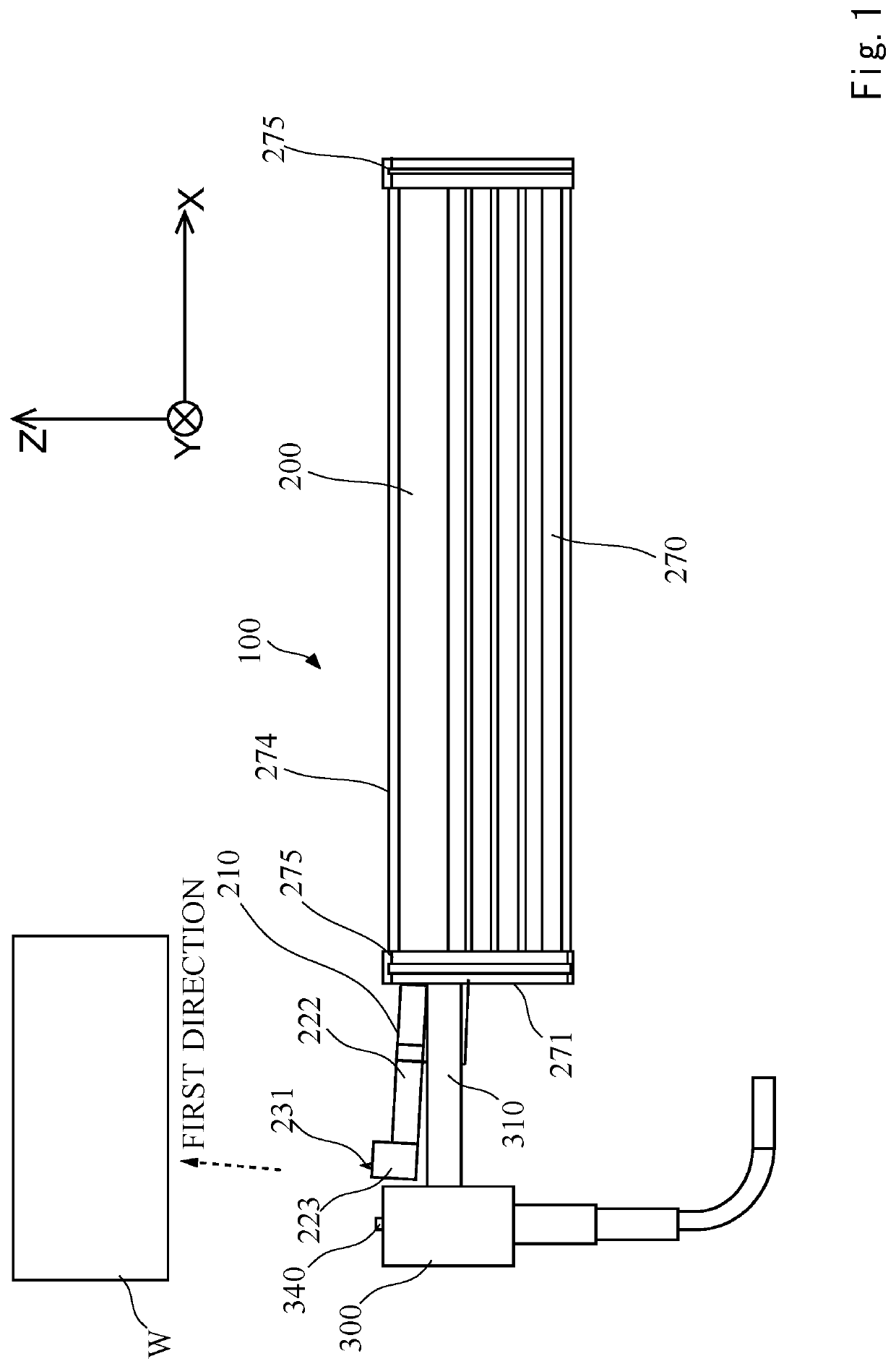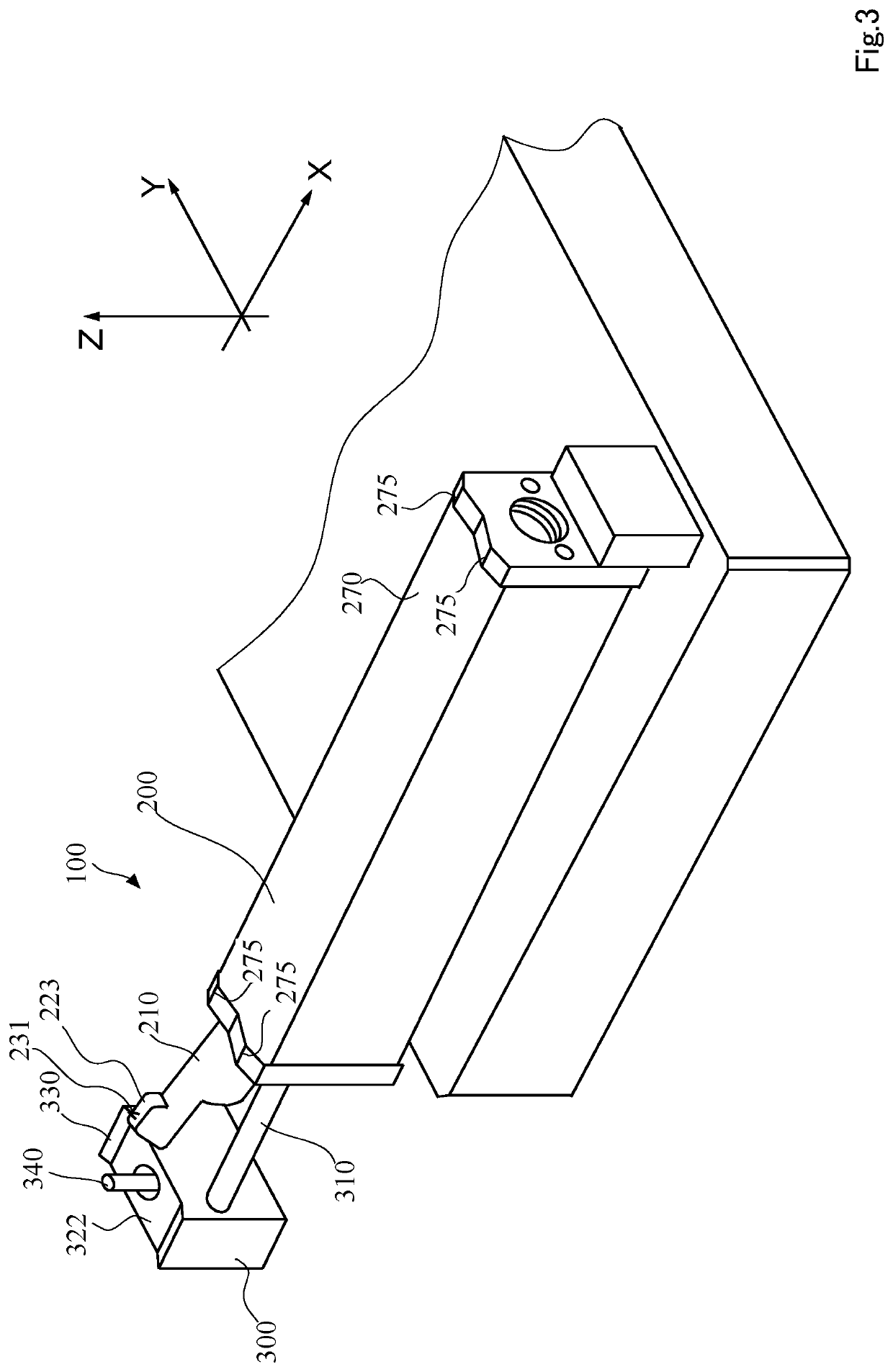Roughness tester
- Summary
- Abstract
- Description
- Claims
- Application Information
AI Technical Summary
Benefits of technology
Problems solved by technology
Method used
Image
Examples
first exemplary embodiment
[0026]A roughness tester according to a first exemplary embodiment of the present invention is described below.
[0027]FIG. 1 is a side view of a roughness tester.
[0028]FIG. 2 is a view of the roughness tester when viewed from the positive side of a Z axis.
[0029]FIG. 3 is a perspective view of the roughness tester.
[0030]FIG. 4 is a cross sectional view of the roughness tester.
[0031]A roughness tester 100 according to the present exemplary embodiment includes a measurement main body 200, a height detector 300, and a control unit 400. (The control unit 400 is shown in FIGS. 4 and 6.)
[0032]The configuration of the measurement main body 200 is basically common to the configuration of a known roughness tester. The configuration of the measurement main body 200 is briefly described below. The measurement main body 200 includes, for example, a stylus unit 210, a drive unit 250, and a main-body housing part 270 as shown in FIG. 4.
[0033]The stylus unit 210 includes a casing body 220 having a s...
usage example 1
[0068]FIG. 9 is a diagram showing a suitable usage example of the roughness tester 100.
[0069]In FIG. 9, a transportation table 610 having a flat top face is prepared.
[0070]The transportation table 610 includes grips 620 as gripping means on both ends thereof. On the top face of the transportation table 610, a plurality of (here, three) roughness testers 100 is installed. The roughness testers 100 are installed in a manner such that the main-body base faces 274 face upward. In this manner, a plurality of roughness testers 100 is unitized. The unitized roughness tester 100 is referred to as a roughness tester unit 600. To perform roughness measurement, the operator successively places workpieces W on which the roughness measurement is performed in such a manner as to straddle the height detector 300 and the front main-body support foot 275. The operator is only required to successively place the workpieces W and is not required to perform operation, such as pushing a start button.
[007...
first modification
[0072]The height detector detects the height of the workpiece surface in the first exemplary embodiment, but a height detector 300A may be provided, as exemplified in FIG. 11, to detect the height position (posture) of the stylus unit 210. In FIG. 11, the height detector 300A is provided to detect that the posture of the stylus unit 210 is parallel with the drive axis. Here, the height detector 300A is held by a coupling rod 310A extending from the front end face 271 of the main-body housing part 270. However, the height detector 300A may be provided inside the main-body housing part 270. A supporting base part 500 may be provided in such a manner as to face the front end face 271 of the main-body housing part 270, interposing the stylus unit 210 (the skid 223) therebetween to provide a support foot 510, but the supporting base part 500 may be omitted. In the height-reference-value setting unit 411 of the control unit 400, a detect value of the height detector 300A when the stylus 2...
PUM
 Login to View More
Login to View More Abstract
Description
Claims
Application Information
 Login to View More
Login to View More - R&D
- Intellectual Property
- Life Sciences
- Materials
- Tech Scout
- Unparalleled Data Quality
- Higher Quality Content
- 60% Fewer Hallucinations
Browse by: Latest US Patents, China's latest patents, Technical Efficacy Thesaurus, Application Domain, Technology Topic, Popular Technical Reports.
© 2025 PatSnap. All rights reserved.Legal|Privacy policy|Modern Slavery Act Transparency Statement|Sitemap|About US| Contact US: help@patsnap.com



